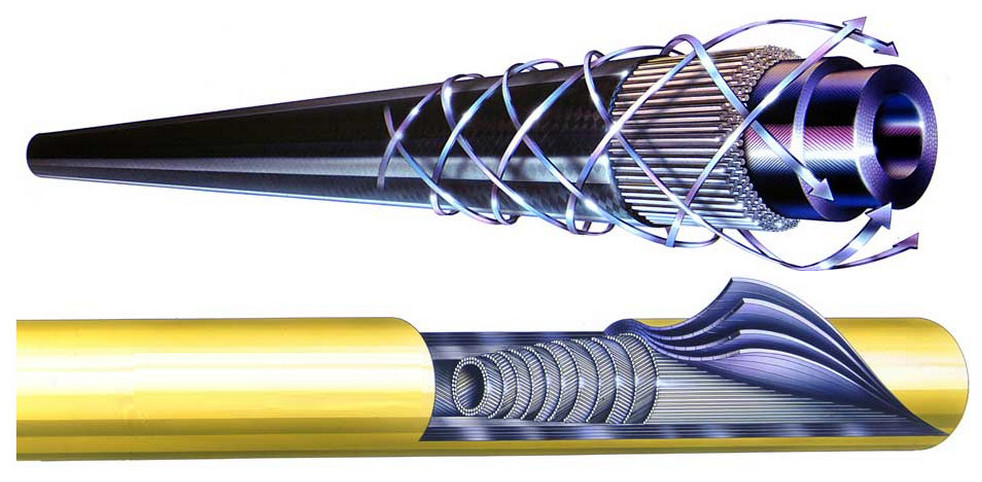
Steel has a low torque, and nobody complains.”

“I just can’t understand why anybody wouldn’t want a low-torque shaft. Tech shafts now are being manufactured by Apache Matrix Composites under Jackson’s supervision. “If you hit the ball on the face, torque matters,” says Jackson, whose A.J. Tech founder Al Jackson, have been longtime proponents of low-torque shafts (torque lower than 3). Some experts, such as Ping CEO John Solheim and A.J. Should golfers pay attention to torque numbers? We worked with low-torque shafts that he hit just as well or better, but it always got back to the feel thing.”

Says Kim Braly, director of research and development for Royal Precision, “I was working with Raymond Floyd, and he likes a shaft with a little more torque. There was one improvement, though, that they all seemed to notice: “The irons feel a lot better.” Invariably they were unable to improve the trajectory, dispersion or distance of their iron shots.

These revolutionary cavity-back irons came with one shaft choice only, an extremely stiff steel shaft, causing some golfers to switch to softer shafts. There is a famous story about players who reshafted early Eye irons from Ping. Shafts with higher torque and more flex feel better to most golfers. Other than tip diameter, what factors make some golf shafts feel better than others? Amateurs produce more off-center hits and thus can benefit from the increased stability of the. Touring pros can take advantage of this because they repeatedly hit the sweet spot.
SPINE ALIGN STEEL SHAFT DRIVERS
Yet the company’s consumer drivers have the larger. 350, and that 15 thousandths of an inch seems to make a monumental difference for PGA Tour players.įor example, all TaylorMade drivers on the PGA Tour have. Why do shafts have different tip diameters? “Remember that a deeper face will produce less spin,” Storman says, “so you may need more loft to achieve the right trajectory.”
SPINE ALIGN STEEL SHAFT DRIVER
“Smaller heads produce a lower launch angle,” he says.Ĭonversely, low-ball hitters shoulder consider a larger driver head with a more flexible shaft. Storman’s advice for high-ball hitters: Use a smaller driver head and a stiffer shaft. “It can make a huge difference, changing heads and changing shafts,” says Brad Storman, a PGA member who is director of sales and marketing for shaft maker Penley Sports. Experiment with different-size heads and different shafts. What are the primary considerations when buying a custom shaft for a driver?īe cautious. The highlights: Most men historically have used shafts that are too stiff clubs that “feel good” almost always have shafts with more torque the 60-year-old Dynamic Gold shaft still is the most popular iron shaft on the PGA Tour and the Rifle iron shaft is halfway to a Grand Slam this year. The question-and-answer format also includes general reflections on the evolution of the modern golf shaft.

Many of their comments are included in this examination of steel and graphite shafts. To provide insight into shaft selection and performance, Golfweek talked with several knowledgeable individuals in the golf industry. All golfers want to know more about shafts.


 0 kommentar(er)
0 kommentar(er)
